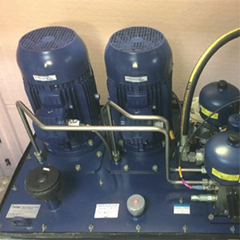By 2040, it is expected that around 4GW of the UK’s onshore wind capacity will be repowered projects. The next few years will see slow growth in this sector, around 100MW per year from 2020, but increasing to around 500MW per year by 2035. So as a significant number of wind turbines begin to reach the end of their original planned life service, our attention is focussed on the topic of life management strategies to support owners make smart business decisions about the next phase of their wind farms.
The decision on life extension is complex and inevitably includes technical, economic and legal considerations as well as acknowledging uncertain future electricity market prices and revenue streams, which determine if life extension is economically feasible.
Decommissioning, repowering or continued operation are the main options to be considered and although wind turbines are generally designed for a service life of 20 years, many can continue to operate past their original design life. As the size and capacity of turbines increase, and technology continues to improve, the economic case for life extension is likely to become clearer. In fact, the lifetime of a wind turbine can often be extended by minor and low-cost repairs.
During 2018, a new global wind farm technical specification was accepted for development by the International Electrotechnical Commission (IEC) – IEC TS 61400-28, ‘through life management and life extension of wind farms’. This introduced the concept of independent verification of the strategies for equipment maintenance throughout the entire lifecycle of a wind farm.
A key objective of the technical specification is to establish independent guidance on best practices for wind farm operations. Throughout a typical lifecycle of a wind farm, qualitative and quantitative information will be collated and assessed to improve decisions on equipment performance, farm operation and maintenance.
The aim is to provide impartial and independent assistance to all wind farm stakeholders as they weigh up decisions about retrofitting, repowering or life extension. These insights can be gained from a thorough assessment of the condition of all operating systems in a wind farm as the plant ages.





















